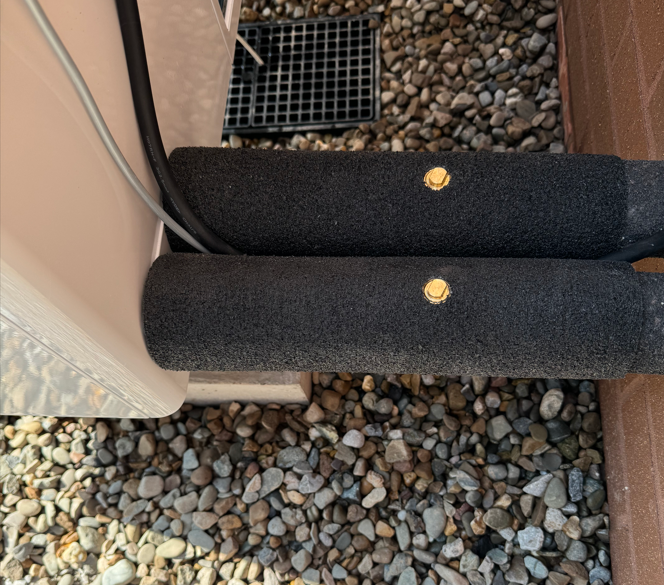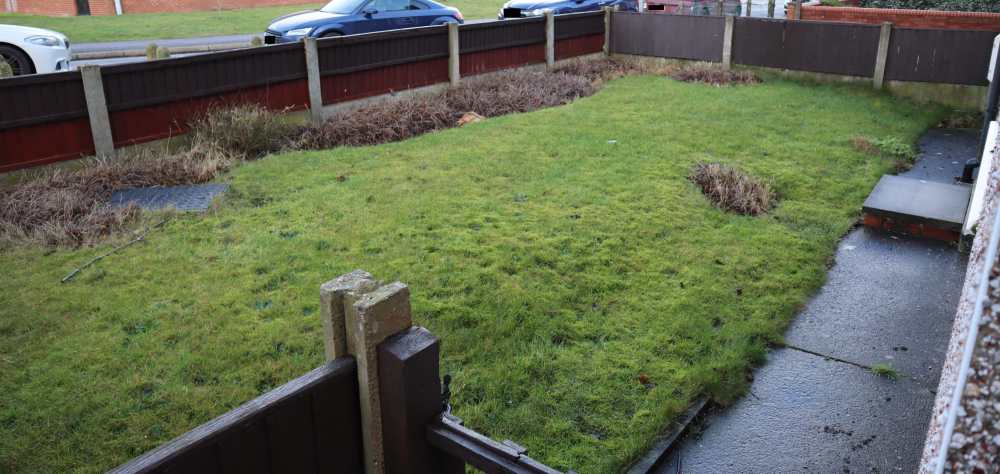Leaderboard
Popular Content
Showing content with the highest reputation on 09/01/24 in all areas
-
To close off, planning permission was granted 2 days ago. A suitable drink was taken that evening 😁5 points
-
Chuffed to bits, finally finished my diy install of my nice shiny 7kW Arotherm. Have only used for dhw but working a treat once I realised that my esbe diverter valve was wired back to front and I was heating the ufh ! Just need to finish off wiring the OEM stuff. Old boiler out : New unit : Primary Pro and anti-freeze valves2 points
-
Time of use tariffs will always be available. Here in Ireland (NI is part or the Irish market, not GB) demand falls off a cliff at night and wind generation is curtailed. Regardless of how many EVs are on the road there will always be a need for an incentive to shift load into the E7 hours. Little and often is ok if you don't do many miles. If I were to commute to Dublin three days a week then I would need to charge my 75 kW battery at 11 kW every night and that would only just fit inside the E7 window. (thankfully I don't do this any more, but I did in the past) The problem I found is that here in the UK the PV suppliers have no clue and don't want to sell 3P hybrid inverters. When I approached UK inverter suppliers they just wanted to flog me three single phase inverters, which is fiendishly complex and crazy expensive. There are plenty of good 3P G98 compliant inverters, its just that UK suppliers don't stock them and don't want to sell them, probably beacause there is too little demand here to make it worthwhile. Look overseas however and it is a different story. We are getting our 3P inverter from an EU supplier where there is lots of choice at good prices.2 points
-
Hi, We're just really starting to plan our the construction of our build after 2.5 years in the planning system. I've amassed plenty of knowledge of the planning process, how subjective it can be and how important it is to manage your own expectations from the start. It's also shown me first hand why land with planning permission is worth so much - those that can get a site from nothing to approved have put a lot of risk on the line if like us you have bought a blank site. I believe a lot in knowledge capture and exploitation, so although I'll be here to learn and draw on others for the next phase, I'm keen to share an unhealthy depth of planning experience and knowledge I've now amassed. Initially I'm holding off from publishing our exact planning reference number etc. Our Initial Process: Our rough process at the start was: Purchased land from family based on valuation of land with no planning, and actually paid more than a neighbour had offered shortly before (so the risk wasn't the same as buying 'any old plot' - there is a lot of history and ties for us to wanting to preserve this parcel of land whether we achieved planning or not). Reviewed all the planning applications for the immediate lanes and roads to understand the likely reasons for refusal (we already knew planning was difficult to achieve) and, importantly, note the architects and planning agents that had been used successfully. Searched for local planning consultants and spotted a name that was familiar(!) - they were previously the head of planning for the LPA for 15+ years and had signed off many (many!) refusals and approvals in the immediate area. Approached this planning consultant and they attended site (£250) and basically thought we may have a 50:50 chance, weighing everything up. Asked his view on some architects - he reluctantly gave a couple of names (not endorsing them, but as examples of some he'd worked with) We searched locally for an architect and approached two. We were upfront with them about approaching a couple of different firms, both attended site (free - very local) and we selected one. They clearly have a lot of approaches from people 'who have bought some land...'; what gave us significant credibility was that we had a planning consultant (who was well known and respected) who thought it had a chance; by all accounts, he was known for being pessimistic and so 50:50 was apparently pretty good from him! ...and then we got stuck into the detail. Expectations: We'd set our expectations (based on the planning consultant's advice) as: Expect it to take 12mths for the application to be refused (having trawled the LPA planning history it seems to be a right of passage for any new dwelling application, just to see if you really want it). Appeal - expect this to take 18-24mths. Review the refusal and submit an amended application in parallel to the Appeal. Timeline (attached): I've attach a timeline summary of our first (refused) application, which we ensured our planning consultant included in our appeal submission - maintaining a meticulous action log of all emails and phonically during our planning process proved invaluable. Summary: Here's a small extract of a summary that I ended up including in a few of the documents submitted in the second application - putting this at the front really helped land the salient points of the development. As with any application, there are a lot of site specific details and it's a skill writing something that is short enough to be read - including this bulleted list at the start gave me more confidence the LPA (and committee if it went that way) would see that I'd covered off the main areas they may seek to refuse. We submitted a very comprehensive full planning application so that they had to work hard to find a reason for refusal. It worked, because it got approved. a. Not a developer-led application; applicant-led and meets criteria for Self-Build Housing; the applicant is registered on Part 1 of the Custom & Self-Build register. b. Proposal is for a single 4-bed house, single external garage (4 parking spaces) and external home office. c. 0.84-acre plot; private garden. d. Last undeveloped plot along the lane. e. The plot boundary has been set out since 1909 as part of the low-density design of the area. f. It is not a sub-division. g. It is in the developed settlement area. h. It is at the intersection of two dead-end unadopted private roads. i. Mains services run directly past the plot. j. It meets criteria for being classed as windfall and infill. k. It is not in a conservation area. l. It is not in an AONB, AGLV, or green belt. m. It is not overlooked by any neighbouring properties n. Although there are many trees on the site, it is not ancient woodland (closest ancient woodland is ~400m away). o. It is adjacent to a small public wood. p. There are no TPOs on the site. Protecting and preserving the trees was the over-riding brief to our architect. Application proposes removing 2 low quality trees. So, that's us and if you have a plot with a lot of trees and you're trying to work with them rather than fell them, I'm happy to share my experience. Kind regards, David Instagram: @Great_Scot_Selfbuild; https://www.instagram.com/great_scot_selfbuild?igsh=bGJtcWVwdzR2ZHA5 Great Scot! Planning Timeline (for buildhub).pdf2 points
-
As a complete novice, what I liked about the passive slab, was how simple it was to execute and understand. The EPS tub created a continuous insulation layer you could see. No cold bridges, and no extra steps. The power floated concrete gave you a finished floor, which needs no additional work, no screed no additional moisture being pumped into your build. I went with fermacell for the same reason, no wet skim adding moisture to the build. The simplicity of putting the UFH in a large piece of concrete with a lot of mass and the ability to hold a lot of heat. This suits the ASHP for heating and cooling. I had ICF on top of my slab, so this was even more simple, the continuous insulation layer around the whole house could be inspected and easily understood. I realise these options aren't for everyone and not applicable in a lot of builds. But don't underestimate the value of simplicity, even if it costs more.2 points
-
Panels are on our roof but we haven't purchased the inverter yet. Theses are the panels we have on the roof. https://leisurepower.co.uk/solar/solar-panels/rigid/15139/10-x-aiko-455w-all-black-solar-panels-aik-a-mah54-455-ab-g2?gad_source=1&gclid=CjwKCAjwodC2BhAHEiwAE67hJIC4gQq28yAfvy0rndgda032mOLPHGcf0UW0m6trniTA3LBsW8jIqRoCGsUQAvD_BwE ... we purchased the panels from an installer who put them on the roof for us. We're very pleased with his work so far. We used S5 pvkit clamps onto standing seam. The UK suppliers only sold the old version so we ordered the new version 2.0 clamps direct from the US. Our installer can't source our chosen inverter within the UK but he is happy that we supply it and he installs it. This 3-phase hybrid inverter has been available on the continent for over a year but the last time I looked all the UK suppliers were selling the old series 5 model. Which is no good for us because we want the latest model with >2 MPPTs. https://etronixcenter.com/en/8176291-se307-solis-solis-s6-10kw-hybrid-inverter-compatible-with-pylontech-force-h2-hv-battery-including-logging-stick-wifi.html Yes its fully G98 compliant... https://connect-direct.energynetworks.org/device-databases/search-gen?model_number=S6-EH3P10K-H-EU We will be plugging in a pylontech H2 battery. Probably this one.... https://etronixcenter.com/en/8173159-pyl-h2-1421-pylontech-pylontech-force-h2-hv-system-1421kwh-1x-fc0500m-40s-v2-4x-fh9637.html ... and conected to this will be a couple of zappis. And maybe an Eddi.1 point
-
I topped it up as some pockets needed more gravel but currently there is stone over the grid. I agree that wacker would damage the plastic if in direct contact. Perhaps I could just slide the wacker plate over it with the engine off or use a big hammer to tap it from above. I think the idea is for the smaller stones to fill the voids so the crap from the nearby trees won't get there first. The work has commenced on the 11th of May - 3.5 months. It looks innocent but about 300 bags of topsoil and subsoil had to go. I am glad we built a proper soakway and got rid of that manhole cover. What you see is just a surplus council slab lying on the gravel.1 point
-
Because the internal walls are a fair distance from the outside walls there will not be much heat loss and therefore the chance of condensation will be negligible.1 point
-
If the stone is all above the plastic before and during then yes, it should be ok. ie no wacker to plastic contact or it will break BUT I've never done that. The wheel loading will do it for you, and maybe add a few stones if needed.1 point
-
1 point
-
Hi all As a frequent user of a Land Rover forum I don’t know why joining one such as this didn’t occur to me sooner. Anyway, I’m here and would like to say “hello”. I landed on this forum with a Goooogle search that took me straight into the diy blown beads cavity wall insulation thread here. I’d just had a ‘eureka!’ moment a couple of days ago, when I realised that topping-up our existing cavity might be a DIY job. I’m sure that the blown beads installation we did over twenty years ago has slumped. I’ll prove this with a thermal camera once the weather gets colder but you can just feel that it isn’t effective. I live in the Peak District and have been in this house for 25 years but after going crazy sorting it out during the first three or four years, since then it has had plenty of maintenance but no major changes. It’s a 1960 build, two storey detached house with rooms in the roof. Roughly rectangular in shape, we have a 17m ridge and it’s almost 6m ridge to eaves. The eaves are just above the top of the ground floor windows. Why am I here, I hear you ask? Well the cavity top-up is just a minor detail. This is the list of work we are starting in the new year. Strip roof back to rafters Top-up bead insulation by pouring into the cavities now exposed Insulate the roof to U=0.16 with PIR between and above the rafters with breathable membrane and counter battens above Fit in-roof solar panels New roof tiles We also have a longer term plan to fit an un-vented hw cylinder with immersion heater to take power from the solar panels/battery and prepare the pipe work to create zones, to include a new zone to an ufh manifold. Then we will probably lift 60m2 of suspended ground floor, insulate and lay pipe work with biscuit screed. To finish we will lay engineered floor. Hello.1 point
-
My advice would be to pay a tradesman if you can. I found it a very nasty job cleaning up a steel beam with an angle grinder. The rust gets everywhere, you need a full face visor. I used these grinding pads, they did an amazing job and were very quick. https://www.amazon.co.uk/Stripping-Remover-Oxidation-Abrasive-Grinding/dp/B098BHYZZ5/ref=sr_1_1_sspa?crid=2PP5S0KHREEFA&dib=eyJ2IjoiMSJ9.-RiUzUPMM0xDSoj_ao0kyzCEkq06Ki9_tKwgAzUzzGgX0w9E79tHP9RGLHAZ1uvD6v4vAAxkOKU6EGAIZZPMcvZ671hrmCKe2R6Tt7GZoB69DpVG1u726XRYtt00LEgJLT0HQPuTJyAz5KFmiO3G46nG7BCaR5hFBVumshPhIn5gaZt4E5aSzxJJLeX3p4bPE-_uKnof6GWenJfVRmlP7I0bfM6W6TT9qNV7A-b0lzxrg3EyRxCQdPaIfmCTWNYaapLHh_bgqAPpLorSF6pTcAg1RtEdnc5IGTeUrhOdDzM.ZZ4qAg_eV6JXNLQLgrNZx0vRPf5X8GVjbarfh9fhWWc&dib_tag=se&keywords=poly%2Bstrip%2Bdisc&qid=1725208867&sprefix=Poly%2Bstr%2Caps%2C94&sr=8-1-spons&sp_csd=d2lkZ2V0TmFtZT1zcF9hdGY&th=11 point
-
We used a completely different way of cladding our timber frame on the Isoquick. We had to have a 50mm cavity between the rainscreen and external insulation. I think this drawing had a few minor tweaks before the work was done. The DPC was folded up and stapled to the 15mm OSB racking before the external insulation was fitted to ensure water couldn't reach the sole plate. Don't know if that's of any help.1 point
-
Isn't the house just built like any normal house? Few houses use thermal blocks.1 point
-
1 point
-
There are quite a few free CAD software packages for Windows and Linux, if you have a Mac, tough. Here is just one. https://www.freecad.org/ Or a portable version. https://portableapps.com/apps/graphics_pictures/librecad-portable1 point
-
Try a free 'dwg viewer' software. You will be able to open the CAD drawing. Not sure if the free versions allow you to make changes though.1 point
-
Thanks, took a bit longer to install than I had planned, probably due to soldering all of the joints as opposed to hiring a press fit tool. I was doing in in fits and starts but all in probably 4 - 5 man days in total. Hard to see how the companies I got quotes from could quote £12k plus ( excluding BUS grant ) the parts were approximately £6k and that is including vat and purchasing as an individual, surely the bigger companies command a much better discount. In my eyes just proves that the current situation is ripping off consumers and not delivering biggest bang from government investment. My view is that it should be opened up to a much bigger market and simply install to a best practice guide but essentially make something like Open Energy monitor compulsory if you want to access BUS grant with a requirement to score at least a cop of 3 or above to qualify. This would put the onus on installers and manufacturers to deliver the goods and stop it being an MCS monopoly. Thanks for advice on cooling, I was going to look into it and have ordered the following at £11 delivered 🙂 https://www.theheatxchange.co.uk/vaillant-plug-coding-vai00202663281 point
-
You would only have perimeter strip insulation against the external walls. The DPM would also only run up the external walls. The DPM would be continuous and therefore running under the block wall would be more practical.1 point
-
What some (most?) sparks baulk at with "signing off" other people's work is they generally won't have a clue as to your FiL's competency. Has he run the cables you can't see properly, are they of the right current carrying capacity throughout, has he tested properly or even fudged the written results. Are his terminations done properly etc. It's to do with 3rd party liability. They can do an EICR but an Electrical Installation Certificate can be a different matter. However as money talks I guarantee you'll find somebody who'll sign it off. I'd be surprised if he hasn't got a mate still in the trade who knows his work and is a scheme member. Some people take that route 😉1 point
-
You’ve overthinking it With the spans you have there will be no bounce Difficult to distinguish between BB and concrete1 point
-
Tanaka. I've abused one for 5 years (with v heavy use in Yr 1) never been serviced and guaranteed to start on the third pull every time. 2 year warranty for commercial use and 5 years for domestic; I think that says something about build quality.1 point
-
Thanks @Thorfun - good to know. Plan at the moment is to have fixed glazing on the corners and a door off the "snug"1 point
-
@TommoUK The OP’s hasn’t stated whether they’re attached or detached. However, their proposed extension is more than 4m deep. It therefore requires Prior Approval or Householder approval. It could not be any more straight forward.1 point
-
I consider all options but 99% I will choose strip footings or pads, except on loose fill. The building sits on solid foundations. The slab and insulation only support room loadings....an upright piano being the heaviest it will ever support, and a theoretical, slight compression of insulation won't matter. No need to get more complicated and use specialist workers either.1 point
-
Ecology. No issue if you own the land. 6-8 weeks for application, quite difficult to get the first appointment. You need to have a plan of costs, proof of income, outgoings etc. Very helpful & easy to deal with.1 point
-
You could just stick to the self build product if the charge was bigger than the coat of switching to standard mortgage. It seems these mortgage providers are concerned with similar things you have to input for insurance quotes on comparison sites. I hadn't twigged that the material your roof was covered in effected mortgagability. Good tip there above @ChrisInKent1 point
-
For a broker I can recommend mayflower. We are both self employed, we ended up going Harpenden as they provided a larger lending capability. It took about three months to get it all sorted. You do have to pay a broker cost but in our case it was money well spent and they will also help us convert to a standard mortgage once we get structural warranty signed off. some lenders won’t lend on properties with a flat roof. One thing is that most self build mortgage were over 2 years, ours was built in a year so also look at the ERC terms.1 point
-
I don’t know the answer to the planning question. My experience of converting a detached garage to one bed accommodation (with full planning in place) was that once we finished the local council classed it as an annexe they made us pay council tax on it.1 point
-
Planning runs with the land. So on your question, It would come down to proof. If you are relying on established use you would need a statutory declaration from the seller evidencing their period of use and you would then seek to regularise this through a certificate of lawful use. This doesn’t help you though as it was previously used by a family member not a third party.1 point
-
@Sren, could I politely point out that we are not Planning Experts ( @IanR appears to be as close to one as it gets - but there's the exception that proves the rule) . We are merely interested, helpful - and nosey - amateurs. Experts by Experience as the research literature calls it. There is no substitute for obtaining proper professional advice. Good luck! Ian1 point
-
Short-term-holiday let is slightly different to letting out to a family member. It may not now happen with Labour's Planning shake-up, but a C5 Use Class was due to be introduced this summer for Short-term-holiday let. Included was to be a PD that allowed C3 -> C5 and C5 -> C3 Use change. You don't say where you are from, for England, before C5 get's introduced, then a Holiday Let is most likely to be seen as a C3 Use, same as the dwellinghouse, so no Change of Use required. If it's run more like a B&B or Hotel, then it starts to look like a C1 Use that would require a change of Use. This is a grey area and some LPA's are more sensitive to holiday lets and may try to push it towards a C1 Use. If in doubt you need to speak to your LPA. Some LPA's are getting difficult to speak to which could push you towards applying for an LDC, for them to give a formal reply as to whether they feel the Use you intend to put it to falls within what they consider C3. From what you've said It's unlikely you need a Change of Use. However you need to consider the Building and any external changes that have been made. Even if the renovation completed in 1989 did not have permission, it would now be immune from enforcement, unless: changed anything external that would require planning permission. If you are happy the building and any changes have planning permission, then I don't feel there is a planning issue with you using it for a short-term holiday let. If in the future a C5 Planning Class is introduced then once you have rented it out for more than 90 days in a year it would fall into the C5 Use Class automatically via PD.1 point














